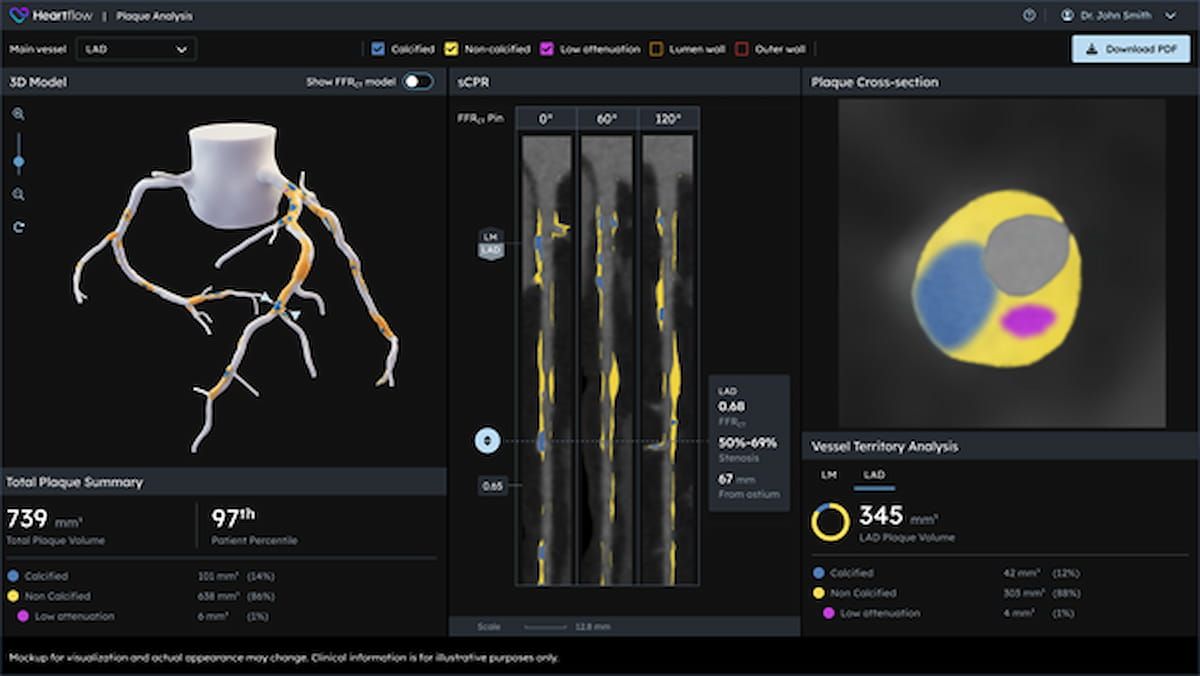FDA Clears Heartflow’s Next-Generation Plaque Analysis Software for CCTA
The updated Heartflow Plaque Analysis software reportedly offers enhanced 3D visualization of plaque type, volume and distribution based on coronary computed tomography angiography (CCTA) imaging.
Offering an enhanced algorithm and bolstered 3D imaging to capture plaque quantification, the updated Heartflow Plaque Analysis software has garnered 510(k) clearance from the Food and Drug Administration (FDA).
Emphasizing the use of 3D color-coded visualization for insights on the type, volume and distribution of coronary plaque, the next-generation update of the Heartflow Plaque Analysis software provides a 21 percent improvement in plaque detection in comparison to the previous algorithm for the software, according to Heartflow, the developer of the Heartflow Plaque Analysis software.
The recently FDA-cleared Heartflow Plaque Analysis software for use with coronary computed tomography angiography (CCTA) provides a 21 percent improvement in plaque detection in comparison to the previous algorithm for the software, according to Heartflow, the developer of the software. (Image courtesy of Heartflow.)

“Understanding not only how much plaque is present, but also plaque type and distribution, is critical in predicting patient risk and guiding personalized treatment,” said Matthew Budoff, M.D., a professor of medicine at the David Geffen School of Medicine at the University of California Los Angeles (UCLA) Medical Center. “With these enhanced capabilities, Heartflow Plaque Analysis provides clinicians with the clarity we need to move from detection to decision with speed and confidence.”
Heartflow added that in addition to coverage from UnitedHealthcare, Cigna recently announced coverage for employing Heartflow Plaque Analysis software, starting on October 1, 2025, to assess patients with acute or stable chest pain and evidence of mild to moderate narrowing of coronary arteries on CCTA.
Newsletter
Stay at the forefront of radiology with the Diagnostic Imaging newsletter, delivering the latest news, clinical insights, and imaging advancements for today’s radiologists.